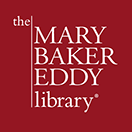What do we know about the experiment of the Oxford students?

Readers of Mary Baker Eddy’s Science and Health with Key to the Scriptures are likely familiar with the account of an experiment by students at the University of Oxford:
A felon, on whom certain English students experimented, fancied himself bleeding to death, and died because of that belief, when only a stream of warm water was trickling over his arm. Had he known his sense of bleeding was an illusion, he would have risen above the false belief….1
Inquirers to The Mary Baker Eddy Library often want to know about the source of this story. Unfortunately, we do not know where the account originated.
We have, however, found a report of interest that was mentioned in Warren Felt Evans’s 1869 book The Mental-Cure:
Fear is the opposite of faith, and produces equally striking effects in the generation of diseased conditions of the body. Many facts of this kind have been collected to illustrate what is falsely called the influence of the imagination…. A familiar fact is that of the Edinburg [Scotland] criminal who died from a supposed loss of blood, when it was only warm water that was made to trickle over his arm after it was barely pricked by the surgeons.2
Like Eddy, Evans (1817–1889) had contact with the mental healer Phineas P. Quimby (1802–1866), and himself became a pioneer of mental healing—or what he called “psychical remedies”—in New England. (Eddy sought out Quimby in October 1862, hoping his system of healing could cure her of longstanding illnesses.) The Mental-Cure was Evans’s first publication. It was followed by many others, the most popular being The Divine Law of Cure.
It’s possible that Eddy and Evans first heard the story of the Oxford experiment from Quimby. We do not know if Eddy read Evans’s book.3 We have also found some evidence in the archives that she herself wanted to verify the incident. We do know that she must have heard or read of it prior to 1875, because she included the account in the very first edition of Science and Health, published in that year. At that time, the passage read as follows:
Mind is the only alterative of the body; every secretion and function of the human system depend on mind and are controlled by it. The pallid invalid supposed to be dying from a bad state of blood, is restored to strength and health by changing her belief on this subject …. The Oxford students furnished this precedent, who caused a felon to die of the belief he was bled to death; when not a drop of blood had flowed. This single case proved the superiority of belief over matter and blood, to kill a man. The belief that Life is contingent on matter, or that certain conditions of the blood and organic structure are fatal to man, must be met and mastered, before Life is understood, or found immortal….4
Eddy referred to the Oxford experiment only once in her correspondence. This was in an 1888 letter to her student Edward A. Kimball.5
- Mary Baker Eddy, Science and Health with Key to the Scriptures (Boston: The Christian Science Board of Directors), 379.
- Warren Evans, The Mental-Cure, Illustrating the Influence of the Mind on the Body, Both in Health and Disease, the Psychological Method of Treatment (Boston: H.H. and T.W. Carter, 1869), 246. https://hdl.handle.net/2027/loc.ark:/13960/t73v0q544
- The Mental-Cure reports another experiment on the same page:
“One of the most instructive and satisfactory experiments on record, showing the influence of the mind in the generation of fatal diseases, is that tried upon four Russian criminals, who had been condemned to death for political offences. It was reported in the London Medical Times. The cholera was raging at the time in Russia, and the criminals, while ignorant of the fact, were made to occupy beds on which persons had recently died with the disease. Although thus exposed to the contagion, not one of them exhibited the least symptom of the malady. After this they were told that they must sleep on beds that had been occupied by persons who had been sick with the cholera. But in fact, the beds were entirely new, and had never been used by any one. Their fear proved to be a more powerful influence than the contagion, for three out of the four took the disease in its most fatal form, and died in four hours after the attack….” (246–247)
Science and Health recorded a similar anecdote in its first edition, mentioning that individuals died from supposed exposures to contagions “when such was not the case” (412). This is the final version:
“This fact in metaphysics is illustrated by the following incident: A man was made to believe that he occupied a bed where a cholera patient had died. Immediately the symptoms of this disease appeared, and the man died. The fact was, that he had not caught the cholera by material contact, because no cholera patient had been in that bed.” (154)
The occurrence of both accounts in The Mental-Cure and Science and Health might point to Quimby as a common oral source, or to Evans’s book as the origin of the illustration. In her early unpublished manuscript, “The Bible in its Spiritual Meaning,” Eddy appears to conflate the two stories, writing and then crossing out: “the Oxford student who died of the belief that he was having fever.” (See Eddy, n.d., A09000, 3.)
- Mary Baker Glover, Science and Health (Boston: Christian Science Publishing Company, 1875), 421. In an 1879 manuscript of the chapter “Demonology,” Eddy wrote: “The evidence <was clear> that mind alone killed the felon <on> [ILLEGIBLE] whom the Oxford students experamented twenty-five years ago.” We do not know the source for the date she mentions, dating the experiment to 1854. Eddy, 17 September 1879, V00769, 49.
- See Eddy to Edward A. Kimball, 1888, L07392.

